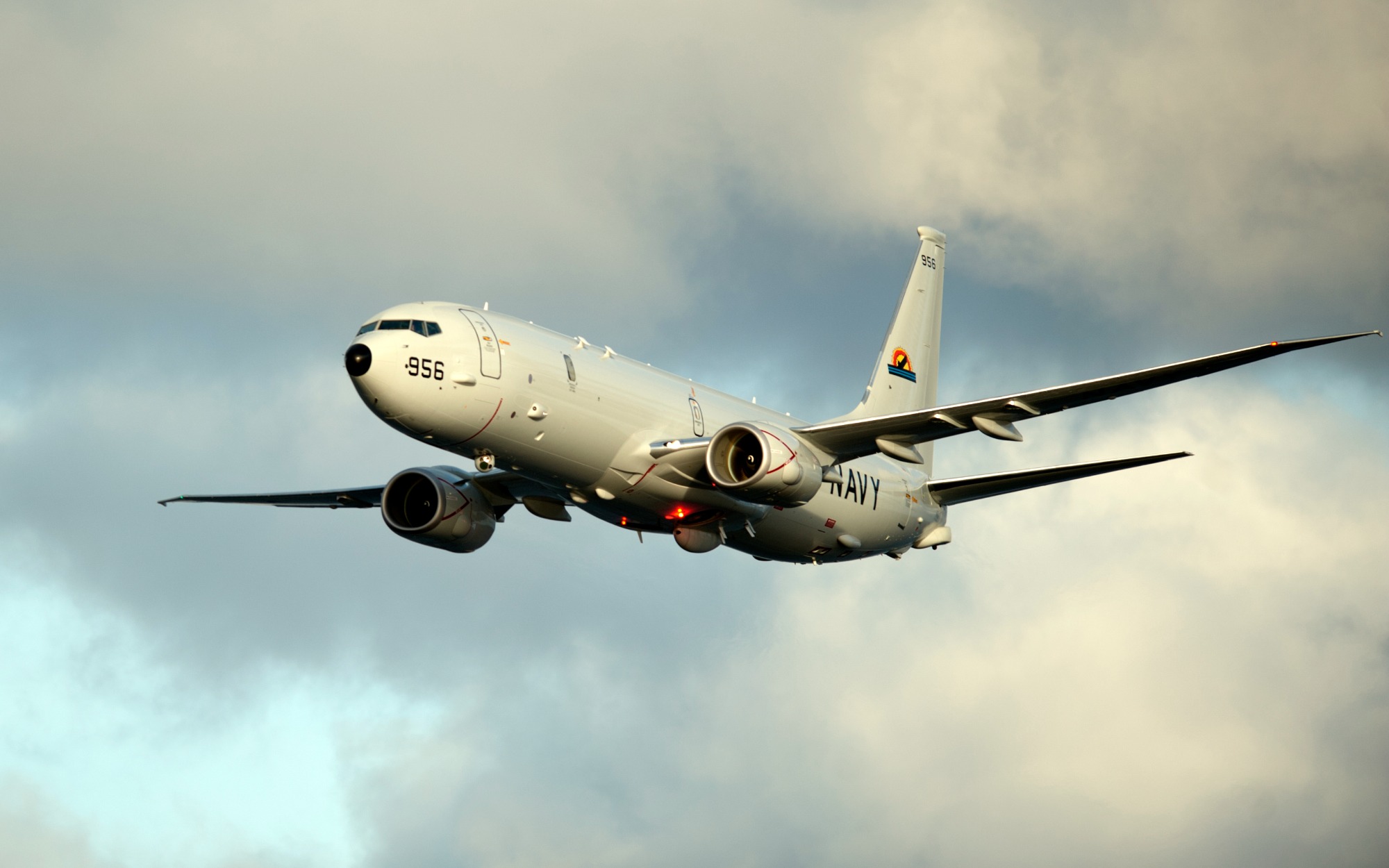P-8A Poseidon: The Aircraft Built to Hunt Russian and Chinese Submarines
In April, Beijing criticized a U.S. Navy P-8A Poseidon's flight through the Taiwan Strait, labeling it provocative. The P-8A, a Boeing-modified 737-900ERX, serves multiple roles including anti-submarine warfare and intelligence operations.
Summary: In April, Beijing criticized a U.S. Navy P-8A Poseidon's flight through the Taiwan Strait, labeling it provocative. The P-8A, a Boeing-modified 737-900ERX, serves multiple roles including anti-submarine warfare and intelligence operations.
-Although primarily known for maritime tasks, its strategic significance is underscored by its recent upgrades, like the integration of the Long Range Anti-Ship Missile.
-The aircraft, named after the Greek god Poseidon, symbolizes its prowess in naval dominance, embodying the multifaceted capabilities of modern military assets while emphasizing its role in global maritime security.
What Makes the P-8A Special
Earlier in April, Beijing criticized the flight of a U.S. Navy aircraft through the Taiwan Strait. The aircraft was nothing as dangerous to an adversary as a B-52 Stratofortress or F-35C Lightning II – it was a P-8A Poseidon. The People's Liberation Army’s Eastern Theater Command nevertheless described the flight of the maritime patrol aircraft as provocative.
"The troops of the PLA Eastern Theater Command will remain on high alert at all times and resolutely safeguard China’s national sovereignty as well as regional peace and stability," PLAN Senior Capt. Li Xi, a PLA Eastern Theater Command spokesperson, said in a statement.
P-8A Poseidon: Truly a Multi-Mission Aircraft
While bombers and fighters get the lion's share of attention, the P-8A Poseidon shouldn't be dismissed – a point noted in its name. In Greek mythology, Poseidon was the brother of Zeus, the chief deity of ancient Greece, and Hades, the god of the underworld. When the three brothers deposed their father, the kingdom of the sea fell to Poseidon.
It is somewhat fitting that the Boeing P-8 aircraft is named in Poseidon's honor. The multi-mission maritime patrol aircraft was designed for anti-submarine and anti-surface warfare, shipping interdiction roles, and intelligence, surveillance, and reconnaissance missions, as well as search and rescue missions. It is modified from the narrow-body 737-900ERX that is in service with commercial airlines around the world.
The contract to develop the Poseidon was awarded in June 2004, and the aircraft took its first flight on April 25, 2009. The Navy announced the aircraft's initial operating capability four years later. Since then, the Poseidon has been adopted by the U.S. Navy and by other allies and international partners, including Britain’s Royal Air Force.
The P-8 can conduct low-altitude missions and has executed more than 400,000 mishap-free flight hours around the globe. It can operate over the open ocean as well as in littoral waters with a relatively small crew of a pilot, co-pilot, two naval flight officers, and three enlisted Aviation Warfare Operators/naval aircrewmen.
Five operator stations are mounted in a sideways row along the port side of the cabin. None have windows, but there is a single observer window located on each side of the forward cabin.
The aircraft is equipped with state-of-the-art technology developed specifically for the Poseidon, including synthetic aperture radar, an electro and optical infrared sensor turret, and increased acoustic capability that allows the aircraft to conduct concurrent passive and active processing.
There are currently more than 140 P-8s in operation in two variants, including the P-8A. Its operators include the Royal Australian Air Force and the United Kingdom's Royal Air Force. The Royal Norwegian Air Force, the Royal New Zealand Air Force, the Republic of Korea Navy, and the German Navy recently adopted the platform. The Indian Navy operates the modified P-8I, which features two major components not fitted on the P-8A: a Telephonics APS-143 OceanEye aft radar and a magnetic anomaly detector.
The P-8's two versions share 86% percent commonality with the commercial 737NG, and that reportedly provides enormous supply chain economies of scale in production and support. The P-8 was engineered for 25 years/25,000 hours of service in the harshest maritime flight regimes, including extended operations in icing environments.
Key P-8 Poseidon Specs:
Powerplant: Two 56-7B engines
Length: 129.5 feet (39.47 meters)
Height: 42.1 feet (12.83 meters)
Wingspan: 123.6 feet (37.64 meters)
Maximum Gross Takeoff: 189,200 pounds (85,820 kilograms)
Airspeed: 490 knots (564 mph) true airspeed
Ceiling: 41,000 feet (12,496 meters)
Range: 1,200 nautical miles radius with four hours on station
Crew: Six to Nine
Armament: Torpedoes, cruise missiles
P-8 Upgrades Coming Soon?
In November 2021, the Navy announced it had granted Boeing a contract to begin work integrating the service's premiere anti-ship missile onto the P-8A Poseidon. According to a report from Breaking Defense, the P-8A will be the third plane to receive the Long Range Anti-Ship Missile, a weapon developed and manufactured by Lockheed Martin in response to an urgent operational need from the U.S. Pacific Fleet in 2008.

The previous aircraft to receive the upgrade were combat-focused planes: the Navy's F/A-18 Super Hornet and the U.S. Air Force's B-1 bomber.
Think of the Greek God Poseidon receiving an even bigger trident.
Author Experience and Expertise: Peter Suciu
Peter Suciu is a Michigan-based writer. He has contributed to more than four dozen magazines, newspapers, and websites with over 3,200 published pieces over a twenty-year career in journalism. He regularly writes about military hardware, firearms history, cybersecurity, politics, and international affairs. Peter is also a Contributing Writer for Forbes and Clearance Jobs. You can follow him on Twitter: @PeterSuciu.
You can email the author: [email protected].


